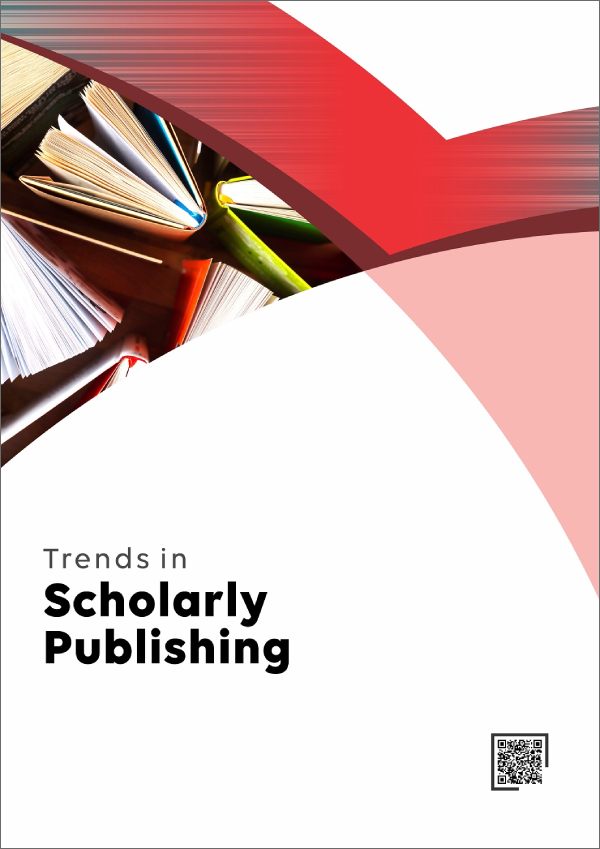Editorial and Peer Review Process
At Trends in Scholarly Publishing, we take pride in maintaining a rigorous and transparent peer review system to ensure the publication and dissemination of high-quality research. This page provides an overview of our meticulous editorial process, from manuscript submission to final publication. Our dedicated team of experienced editors and esteemed reviewers work together to uphold the highest standards of scientific integrity. Through this comprehensive and fair review process, we strive to facilitate the dissemination of cutting-edge knowledge and foster a vibrant scholarly community. We invite authors, reviewers, and readers alike to explore this page and gain insights into your manuscript's meticulous journey before reaching the global scientific community.
Publishing Timelines
At Trends in Scholarly Publishing, we believe that transparency builds trust. That's why we openly share our expected timelines for every stage of the publishing journey-from the moment a manuscript is submitted to its final publication. These informal yet widely accepted benchmarks help authors understand what to expect, allow editors to stay on track, and ensure reviewers are given adequate time for thoughtful evaluations. Our commitment is to maintain both efficiency and quality throughout the peer-review process, supporting a publishing experience that is fair, timely, and academically rigorous.
| Stage | Timeframe |
| Acknowledgement of submission | Within 1-2 days |
| Initial editorial screening | Within 1-2 weeks |
| Peer review process | 4-8 weeks (average) |
| First decision (revise/accept/reject) | 6-10 weeks |
| Final decision after revision | 1-3 weeks after resubmission |
| From acceptance to publication | 2-4 weeks (depending on workflow) |
| Total time (avg.) | 8-16 weeks (from submission to publication) |
Editorial Review
All submitted manuscripts undergo an editorial review before external peer review. At Trends in Scholarly Publishing, this stage is conducted by the Editor-in-Chief, supported by the Managing Editor, Editorial Board members, and Academic Editors where appropriate. The purpose of this review is to ensure:
- The manuscript fits the journal's aims and scope.
- It meets minimum quality and ethical standards (including declarations of conflicts of interest and compliance with human/animal research ethics where applicable).
- The writing and presentation are of sufficient quality to proceed.
- The submission follows the journal's author guidelines.
Based on this editorial review, manuscripts may be:
- Sent back to authors for preliminary revisions,
- Rejected without external peer review if unsuitable, or
- Sent forward to at least two independent peer reviewers for full evaluation.
Peer Review Process
All manuscripts submitted to Trends in Scholarly Publishing undergo a peer review process before final acceptance and publication. As such, our priority is to make decisions on all submitted manuscripts based on the recommendations of at least two independent reviewers. To ensure this, we carefully select well-qualified reviewers who possess a significant number of publications and possess in-depth knowledge of the subject matter and methodology. Trends in Scholarly Publishing offers various peer review options to the author(s) and processes the manuscript according to the author's choice.
- Single-Blind Peer Review - In this peer review model, only the reviewers are aware of the details of the submitting author(s). However, the author is not provided with the details of the reviewer.
- Double-Blind Peer Review - Both the reviewers and the author(s) remain anonymous in this peer review model.
- Open Peer Review - In this model, the details of both the reviewer(s) and author(s) are made available to each other, promoting enhanced transparency and trust in the peer-review process. If the manuscript is accepted, the reviewer's reports, modifications, and the author's responses will be published alongside the article.
The typical review assignment is expected to be completed within 30 days. On average, authors can expect a first decision-whether it's a revision request, acceptance, or rejection - within 4 to 8 weeks of submission. Once a manuscript is accepted, it usually progresses to online publication within 2 to 4 weeks, depending on the editorial and production workflow.
How the Referees selected
Reviewer selection is a critical part of the peer-review process, and our criteria are based on expertise, subject relevance, publication record, and professional reputation. We refrain from selecting reviewers who demonstrate slow response times, insufficient attention to detail, excessively harsh or lenient evaluations, or potential conflicts of interest.
The responsibility for inviting reviewers lies with the Academic Editor, who ensures that each manuscript is evaluated by at least two independent experts. Reviewers gain access to the full manuscript only upon accepting the invitation and are typically given 30 days to complete their reviews. The editorial office maintains regular communication and sends reminders to help reviewers meet deadlines.
How Peer Review Works
Note: The above workflow is only a representation of our peer review process, and it may not be considered a fundamental approach to be followed by other journals.
Reviewer's Database
Trends in Scholarly Publishing strives to make decisions on all submitted manuscripts, including commissioned content, based on the advice provided by at least two independent reviewers. The journal follows a [single-blind/double-blind/open] peer review model, with an average initial decision time of approximately 4-6 weeks. To facilitate this process, Trends in Scholarly Publishing maintains a reviewer database. This database assists us in identifying the most suitable subject experts who can thoroughly review the manuscript.
Reviewer Selection and Recognition via ReviewerCredits
To strengthen the quality, transparency, and accountability of the peer-review process, Trends in Scholarly Publishing integrates with ReviewerCredits, a global platform that certifies peer-review activities and maintains a trusted database of qualified reviewers. Through our SciONE submission system, editors can identify and invite reviewers who are best suited to evaluate a manuscript based on their expertise and track record. This integration helps streamline reviewer matching, enhances transparency, and ensures that reviewers receive verifiable recognition for their contributions to scholarly publishing.
Unbiased/Confidential evaluation process
To ensure fairness in the referee process, we make an effort to avoid selecting reviewers who:
- Have recent or ongoing collaborations with the authors.
- Have previously provided feedback on drafts of the manuscript.
- Are in direct competition with the authors.
- Have a history of disputes with the authors.
- Have a financial interest in the outcome.
As it is not possible for the editor to be aware of all potential biases, we request reviewers to inform us of any factors that might influence their report, including commercial interests. If reviewers feel that they are unable to provide an objective evaluation, we encourage them to decline the review request. We do not consider it necessary to exclude reviewers who have previously reviewed a paper for another journal. The fact that multiple journals have independently identified a particular individual as qualified does not diminish the validity of their opinion.
Referee Reports
Reviewers are requested to evaluate the following aspects of the manuscript under consideration:
- Appropriateness for the journal.
- Originality of the work.
- Methodological soundness.
- Adherence to appropriate ethical guidelines.
- Proper citation of relevant literature.
Reviewers are not expected to undertake corrections or copyediting of the manuscripts. Language correction is not a part of the peer review process.
Final Report
A final decision regarding the acceptance or rejection of the manuscript, along with any recommendations provided by the referees, will be communicated to the author. This decision may include verbatim comments from the referees.
Editor's Decision
Editors have the choice of accepting, recommending modifications, seeking additional external review, or rejecting the manuscript. In the case of a decision for Minor or Major Revision, authors are granted 30 days to submit a revised manuscript. Upon resubmission, the Academic Editor may decide to assign the manuscript to reviewers or make a decision based on their own expertise.
Editorial Independence
At Trends in Scholarly Publishing, our publications undergo a rigorous peer review process conducted by independent Editorial Boards. Our in-house staff does not influence editorial decisions regarding manuscript acceptance or rejection. The final decision is made by the academic editor, taking into account factors such as the selection of appropriate reviewers, the quality of reviewer comments and author responses, and the overall scientific merit of the paper. Our policies are guided by our mission to facilitate open and accessible dissemination of scientific research findings to a broad audience in a timely manner.
Appeals
If you wish to appeal a decision, please email the editor who handled the entire submission inquiry and review process, providing a detailed explanation of your reasons for any complaints or the appeal. Appeals will only be considered in cases where a reviewer or editor is believed to have made a significant error or displayed bias, or when a documented competing interest compromises objectivity. Either of these reasons could lead to a change in the original decision. All appeals will be reviewed by another editor, involving a total of three editors. The majority rule will be applied. The processing of appeals typically takes no longer than two weeks. While a manuscript is under appeal, it remains under formal consideration and should not be submitted elsewhere. Please note that we do not consider second appeals.
Acceptance Criteria
To be published in Trends in Scholarly Publishing, submissions must demonstrate scholarly rigor, originality, and relevance to the field of scholarly communication and publishing. Manuscripts are evaluated through a peer-review process that emphasizes:
- Clarity of objectives and argumentation - the work should present a well-defined problem, question, or perspective.
- Soundness of methodology or analysis - whether empirical, theoretical, or case-based, methods must be transparent and appropriate to the research question.
- Relevance to readers - articles should address issues of significance to editors, publishers, librarians, researchers, or policy makers in scholarly publishing.
- Quality of writing and presentation - submissions must be clearly written, logically structured, and meet the journal's formatting guidelines.
- Ethical standards - manuscripts must comply with international guidelines on publication ethics, including integrity in data use, authorship, conflicts of interest, and research conduct.
Acceptance is not based on perceived "novelty" alone, but on the contribution the work makes to advancing knowledge, improving practice, and fostering dialogue in scholarly publishing.



